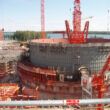Greater transparency and management techniques will instill public confidence in the NRC
By Anthony R. Pietrangelo, June 6, 2008
The contributors to this roundtable have noted the challenges that the Nuclear Regulatory Commission (NRC) faces now and in the future. To successfully address these challenges, I believe there are three key areas that warrant attention–knowledge management, organizational effectiveness, and transparency of the commission’s activities.
The NRC already does many things well in the area of knowledge management. Its training program for new personnel is comprehensive. Better still, new personnel should have the opportunity to learn at plant sites and facilities to attain a better sense of the technology, processes, and activities they’re regulating. Additionally, they must develop a thorough understanding of the regulatory process–not only of the regulations themselves, but their foundation, implementation history, and the commission’s procedures for enacting changes. Beyond formal training, the NRC should maximize the transfer of the wealth of experience in its senior personnel through mentoring and other knowledge transfer programs.
The NRC is now a $1 billion federal agency with more than 3,000 full-time employees. As the bureaucracy continues to grow, management’s challenge is to ensure that the agency carries out its responsibilities effectively. When he began his tenure in 2006, NRC Chairman Dale Klein identified a need to enhance the commission’s use of information technology. For example, the NRC now uses more modern project management software to facilitate its review of combined license applications and design certifications for new plants. Additionally, the commission is seeking to improve its internal processes by using approaches such as Lean Six Sigma, a business-process improvement technique that can be used to minimize idle time. To further build on these recent enhancements, an organizational culture of continuous improvement must be engrained in all employees.
While the NRC is probably the most transparent regulatory agency in the federal government, the commission can still improve upon its communication and interaction with all interested parties. For instance, earlier involvement of stakeholders in the discussion of regulatory issues and potential regulatory actions would serve two goals: (1) a better understanding of the issues, resolution options, and their implications; and (2) enhancing public confidence in the process. While all parties may not agree with the final outcome, there should be enough transparency to provide the rationale for commission decisions.
Topics: Nuclear Energy
Share: [addthis tool="addthis_inline_share_toolbox"]














